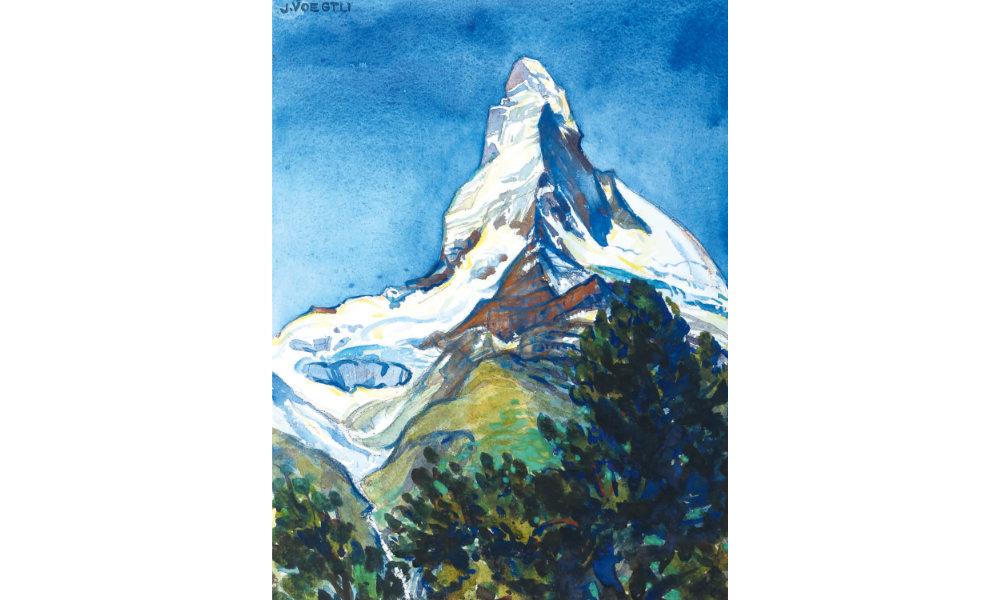In a pure blue sky stands strong a white mountain named Matterhorn, one of the most famous peaks of the Alps. It is, at first glance, an honorable depiction of the strength and power of the mountain which, on the one hand, goes up to the highest place in the sky and, on the other hand, is rooted deeply in the ground. To emphasize the dignity of the mountain, Voegtli painted trees and a brook too small in size against that gigantic mountain. Everything, therefore, points to the mighty power (which is erected in the sky), with its impenetrability (no dark spot seen on its body), cleanness (its being like a mirror, which reflects, in some parts, the blueness of the sky), and authority (its being painted in the middle of the composition and having dominance over all other things).
However, the story is not that simple. After Jacques Derrida’s deconstruction, we are used to looking at everything, especially a work of art, with a hint of suspicion. We, now, believe that a text can deconstruct itself from within without its author’s permission. Superficially looking, it is a picture useful for a nationalist government since the mountain is a universal symbol of the resistance and strength of a nation. Moreover, since it was painted in the early 20th century when nationalism’s flag was waving in air everywhere in the world and which ended with World War II, it is a unified, symbolic representation of the power of a country.
However, on looking closely, we face a bitter question: What is the function of that little lake near the roof of the mountain? Whydoes it look like a hole? As a matter of fact, on the left side of the mountain, there is a hole-like lake, near which a small creek emanates and goes to the end of the painting and even out of it. The brook seems to be going out of the history or out of the authority of the painter. It is a hole in the power of the mighty mountain, which is only recognizable by an armed eye. It tells us that the mountain, which symbolizes a government, country, etc., is not as regular and inscrutable as we may imagine at first. This lake acts like the foot of a peacock: It shouts its presence and breaks down the authority of the mountain. Psychologically speaking, since the lake reflects the summit, it is a sign of mountain’s penetration into the lake presumably as a phallic symbol.
Sources:
Tavousi, Sohrab (2022) “Matterhorn”, in: JULIUS VOEGTLI: A Swiss Impressionist Pioneer, Edited by Nour Nouri & Davood Khazaie, Pashmin Art Publishers, pp.60-61.
Julius Vögtli (1879-1944) was a Swiss painter who played a key role in the development of impressionism in Switzerland. His landscape paintings, which often depicted the Swiss countryside, were characterized by their vibrant colors and expressive brushstrokes. Vögtli’s work helped to establish impressionism as a major artistic movement in Switzerland during the late 19th and early 20th centuries.



